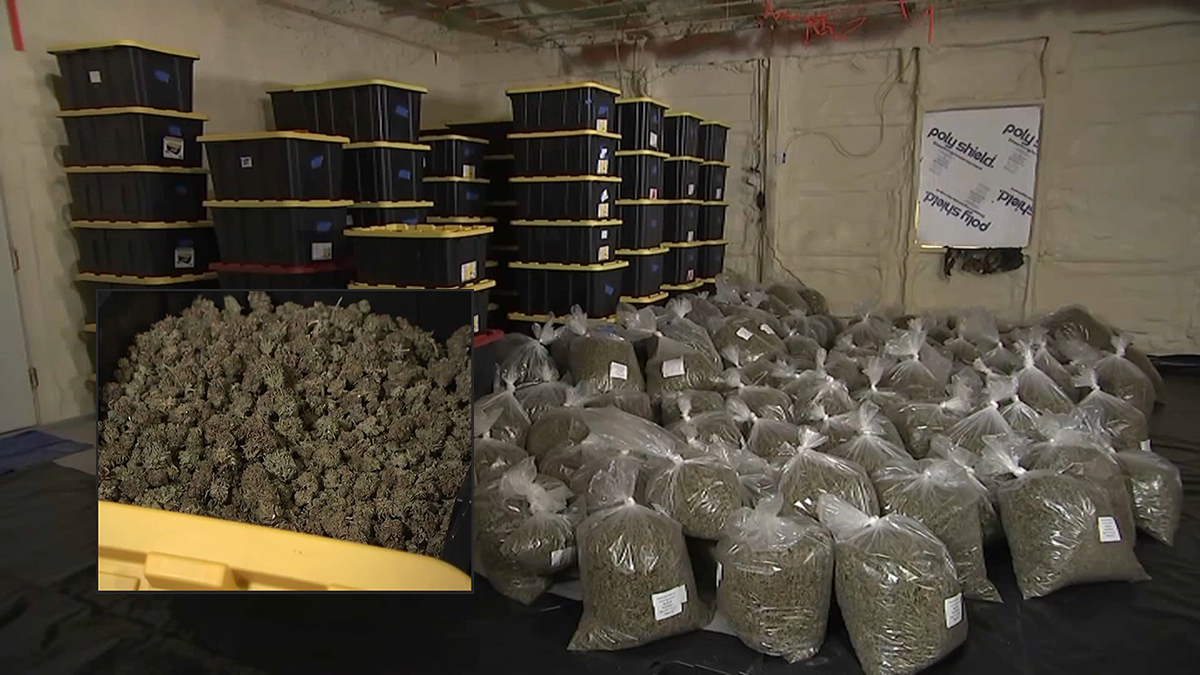We get it, it's the holiday season. No one wants to get family and friends sick -- and no one wants to miss out, either.
With COVID rates up across the country, health experts are urging people to wear masks once again in public indoor settings as well as crowded outdoor ones, and people are naturally anxious about feeling under the weather.
WATCH ANYTIME FOR FREE
Stream NBC10 Boston news for free, 24/7, wherever you are. |
So how contagious is that? If you get sick - or you think you might be getting sick -- here's what to know about the incubation periods for some common viruses that may be more pronounced than usual this winter as well as minor infections that can still ruin your week. We've also got details on how long you're contagious and transmission.
There are, of course, a number of other common communicable diseases, but they're not really ones you'd be worried about transmitting at a dinner table or holiday party. The following information is compiled from a series of official sources, including the CDC and state health departments.
Get updates on what's happening in Boston to your inbox. Sign up for our News Headlines newsletter.
COVID
It's caused by a coronavirus called SARS-CoV-2. Older adults and people who have severe underlying medical conditions like heart or lung disease or diabetes seem to be at higher risk for developing more serious complications from a COVID infection.
- Incubation period: 3-10 days, usually 4-6 days
- How long is it contagious? Onset of symptoms until fever is gone and at least 10 days have passed
- How does it spread? An infected person breathes out droplets and very small particles that contain the virus. These droplets and particles can be breathed in by other people or land on their eyes, noses, or mouth. Infections can also be spread by touching a contaminated surface, in some cases
Flu
Influenza is an infection of the nose, throat and lungs.
- Incubation period: 1-4 days, average 2 days
- How long is it contagious? One day before symptoms occur and up to 7-10 days after symptoms, including fever, begin
- How does it spread? Contact with droplets from the nose and throat of an infected person who is coughing or sneezing
Common Cold
This viral infection of your nose and throat (upper respiratory tract) is usually harmless, but it might not feel that way.
- Incubation period: 2-5 days
- How long is it contagious? Onset of runny nose until fever is gone
- How does it spread? Airborne respiratory droplets from coughs or sneezes; touching a contaminated surface; saliva and skin-to-skin contact (including handshakes and hugs)
RSV
Respiratory syncytial virus is a common respiratory virus that usually causes mild, cold-like symptoms. Most of us get it as toddlers. It can be severe in particularly vulnerable people. Most recover in a week.
- Incubation period: 2-8 days, average 4-6 days
- How long is it contagious? About one day prior to and throughout illness
- How does it spread? Droplets spread through coughing and sneezing or contact with nasal or oral secretions; can also spread via articles contaminated with respiratory discharges
Conjunctivitis (Pink Eye)
This common, highly treatable infection is an inflammation (or swelling) of the conjunctiva, the thin, clear tissue that lines the inside of the eyelid and the white part of the eyeball.
- Incubation period: 24 to 72 hours in viral cases; 2-7 days in bacterial cases (pus is the difference)
- How long is it contagious? During the course of active viral infection. In bacterial cases, infection can be spread until a person has been on antibiotic eyedrops for at least a day
- How does it spread? Contact with discharge from the eyes, nose or throat of infected people; can also be transmitted via contaminated fingers, clothing and other items
Strep
This bacterial infection may cause a sore, scratchy throat. Fever and swollen glands are also possible.
- Incubation period: 1-5 days; 2-3 on average
- How long is it contagious? 10-21 days in untreated cases; onset of sore throat until at least 12 hours on antibiotic and ever is gone
- How does it spread? Person-to-person by direct or intimate contact; rarely by contaminated items, food or water
Norovirus
This highly contagious virus causes vomiting and diarrhea. Anyone can get infected.
- Incubation period: 12 to 50 hours, average 24-48 hours
- How long is it contagious? Acute stage of disease and up to 48 hours after diarrhea stops
- How does it spread? Person-to-person by breathing in respiratory droplets
Monkeypox
This infectious viral disease can occur in humans and some other animals. Symptoms include fever, swollen lymph nodes and a rash that can include crusty sores in various stages of healing.
- Incubation period: 5 to 21 days
- How long is it contagious? Onset of symptoms until all crusts on sores have fallen off (usually 2-4 weeks)
- How does it spread? Close personal, often skin-to-skin contact, with an infected individual
Mumps
This viral infection that affects the salivary glands is easily preventable by a vaccine. It is typically accompanied by swollen glands and a fever
- Incubation period: 12 to 25 days, 16-18 day average
- How long is it contagious? Three days before to four days after day of symptom onset or until symptoms resolve, whichever is longer
- How does it spread? Droplet or direct contact with saliva and by airborne droplet route
Measles
This acute respiratory virus is characterized by fever, cough, runny nose, fatigue and other symptoms. It's serious for small children but is easily preventable by a vaccine.
- Incubation period: About 8-12 days. Rash usually appears about 14 days after exposure but can take as long as three weeks. Fever onset 7-18 days after exposure
- How long is it contagious? Four days before rash until four days after rash appears
- How does it spread? Airborne by a fine mist triggered when an infectious person coughs, sneezes or talks. This stays suspended in the air for up to 3 hours




